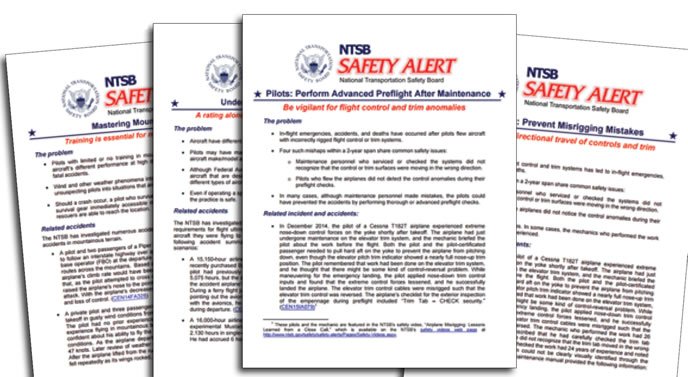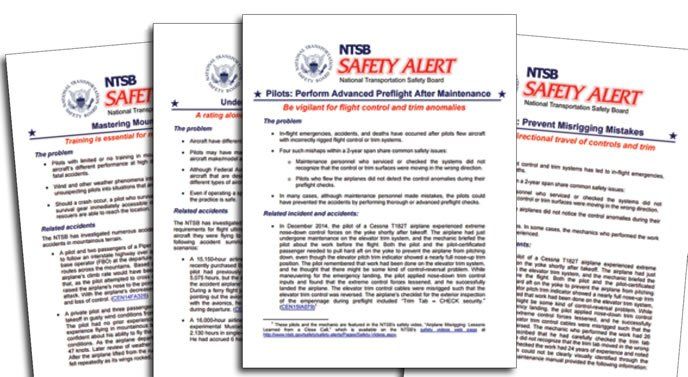There’s no question pilots can make dumb mistakes—each month, the back pages of this magazine have the proof. In many instances, however, pilots make mistakes because they weren’t warned of the consequences of their (in)actions. In other words, sometimes they don’t know what they don’t know. It’s the NTSB’s role to investigate aviation accidents in the U.S., and to come up with recommendations on ways to prevent them.
One of the NTSB’s prevention tools is called a safety alert. It’s a concise statement of what it’s observed, including a brief description of what’s happened to cause related accidents, recommendations on ways pilots can prevent them and a resource list for additional study. The Board has published several of these alerts on various safety topics in recent years (see the June 2013 issue of Aviation Safety) and released four more in March; three targeting pilots and one for mechanics. The NTSB’s recommendations are summarized in the sidebar on the opposite page.

Mountain Flying
Thanks to the elevations involved, the turbulence and downdrafts sometimes created by high winds, and the lack of survival equipment the NTSB sometimes finds during an investigation, the Board made the following observations.
– “Pilots with limited or no training in mountain flying can be surprised about their aircraft’s different performance at high density altitude, often leading to serious or fatal accidents.”
– “Wind and other weather phenomena interacting with mountainous terrain often lead unsuspecting pilots into situations that are beyond their capabilities.”
– “Should a crash occur, a pilot who survives the crash but does not have emergency or survival gear immediately accessible may not survive the harsh environment until rescuers are able to reach the location.”
Flight Experience
The NTSB also notes that, just because someone has the appropriate ratings to serve as pilot in command of a specific aircraft doesn’t mean they have the experience to safely conduct a proposed operation. An example might be a new private pilot with only Cessna 150 experience climbing into a Pilatus PC-12. It’s just not a good idea. The Board’s observations:
– “Aircraft have different flight characteristics, performance, and systems.”
– “Pilots may have many hours of experience, but their experience specific to the aircraft make/model and/or equipment they are flying may be limited.”
– “Although Federal Aviation Administration (FAA) regulations allow pilots to operate aircraft that are designated by a specific category and class, differences among different types of aircraft within the same category and class can be significant.”
– “Even if operating a specific type of aircraft is allowed by regulations, it does not mean the practice is safe.”
Advanced Pre-Flights
Finally, the NTSB wants pilots to pay more attention during pre-flight inspections, especially if the aircraft has just come out of maintenance. Mechanics are fallible, too, and an extra set of eyes—along with a skeptical attitude and clear understanding of what to look for and how to recognize it—can help prevent accidents occurring on the first flight after maintenance is performed.
– “In-flight emergencies, accidents, and deaths have occurred after pilots flew aircraft with incorrectly rigged flight control or trim systems.”
– “Four such mishaps within a 2-year span share common safety issues:
—Maintenance personnel who serviced or checked the systems did not recognize that the control or trim surfaces were moving in the wrong direction.
—Pilots who flew the airplanes did not detect the control anomalies during their preflight checks.”
– “In many cases, although maintenance personnel made mistakes, the pilots could have prevented the accidents by performing thorough or advanced preflight checks.”
For More Information
The NTSB’s Safety Alerts are available online, free for the download, at tinyurl.com/AvSafe-Alerts.




